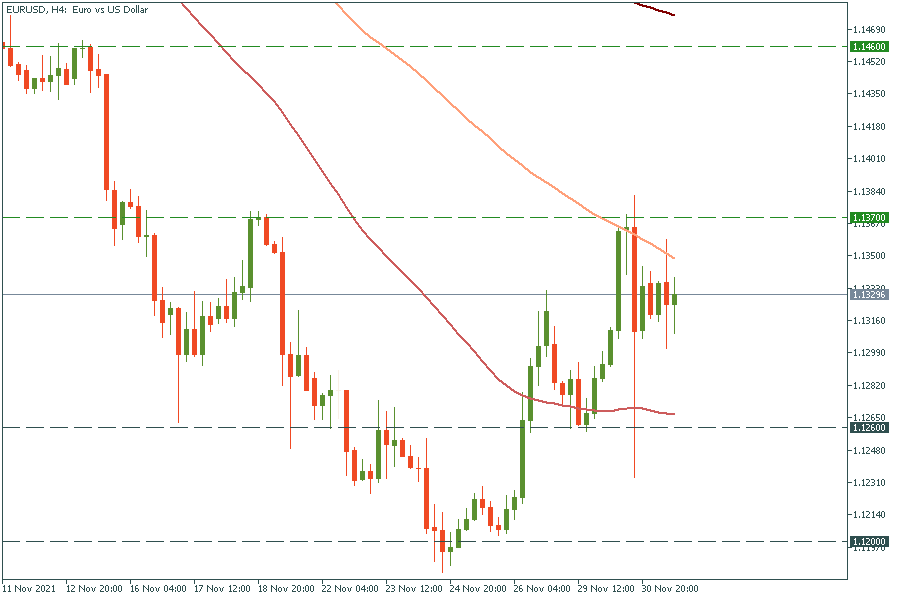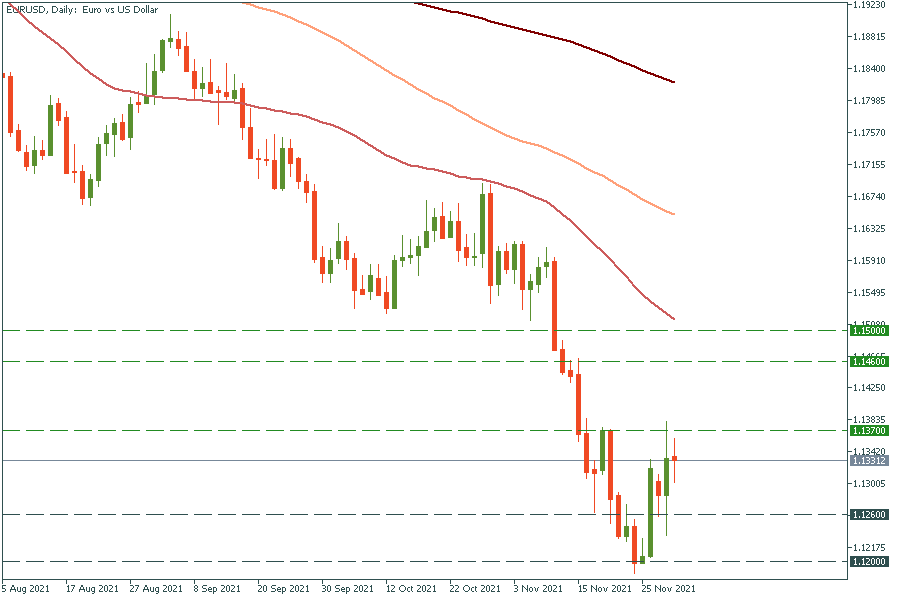Trading Accounts
Trading Conditions
Financials
CFD Trading instruments

Don’t waste your time – keep track of how NFP affects the US dollar!
The ASIC policy prohibits us from providing services to clients in your region. Are you already registered with FBS and want to continue working in your Personal area?
Personal areaEUR/USD ended last week with a steamrolling. This week, the pair keeps edging up. Why? First, the uncertainty over the new Covid-19 variant, omicron, led to a surge in demand in safe-haven currencies such as the Japanese yen and the Swiss franc. Since the US dollar lost its safe-haven role, traders preferred the EUR to the greenback. Second, the USD was rising as the markets were pricing in the rate hike by the Federal Reserve. However, omicron raised concerns that the US central bank can delay a rate increase – the bearish factor for the USD. Overall, a recovery in the US dollar depends on the vaccine progress against the omicron variant.
Today, on Wednesday, we see the US dollar climbing up. It is the result of Powell’s comments. Jerome Powell is the Federal Reserve Chair. He signaled his intention to taper faster, and it supported the USD.
Both omicron and Powell’s comments increased volatility in EUR/USD. What to expect further? The US will reveal essential economic data in the upcoming weeks. If it is strong, the Fed can turn more hawkish at the FOMC meeting on December 16.
The overall trend is bearish. EUR/USD has been moving down since May. However, the short-term trend is bullish as EUR/USD surged and recovered some losses thanks to the weak dollar. It has failed to cross the resistance level of 1.1370 – the high of November 19. The pair can reverse down to the recent low of 1.1260. If it crosses it from the top down, there are more chances the pair will fall further to the psychological mark of 1.1200. Resistance levels are 1.1370 and 1.1460.

